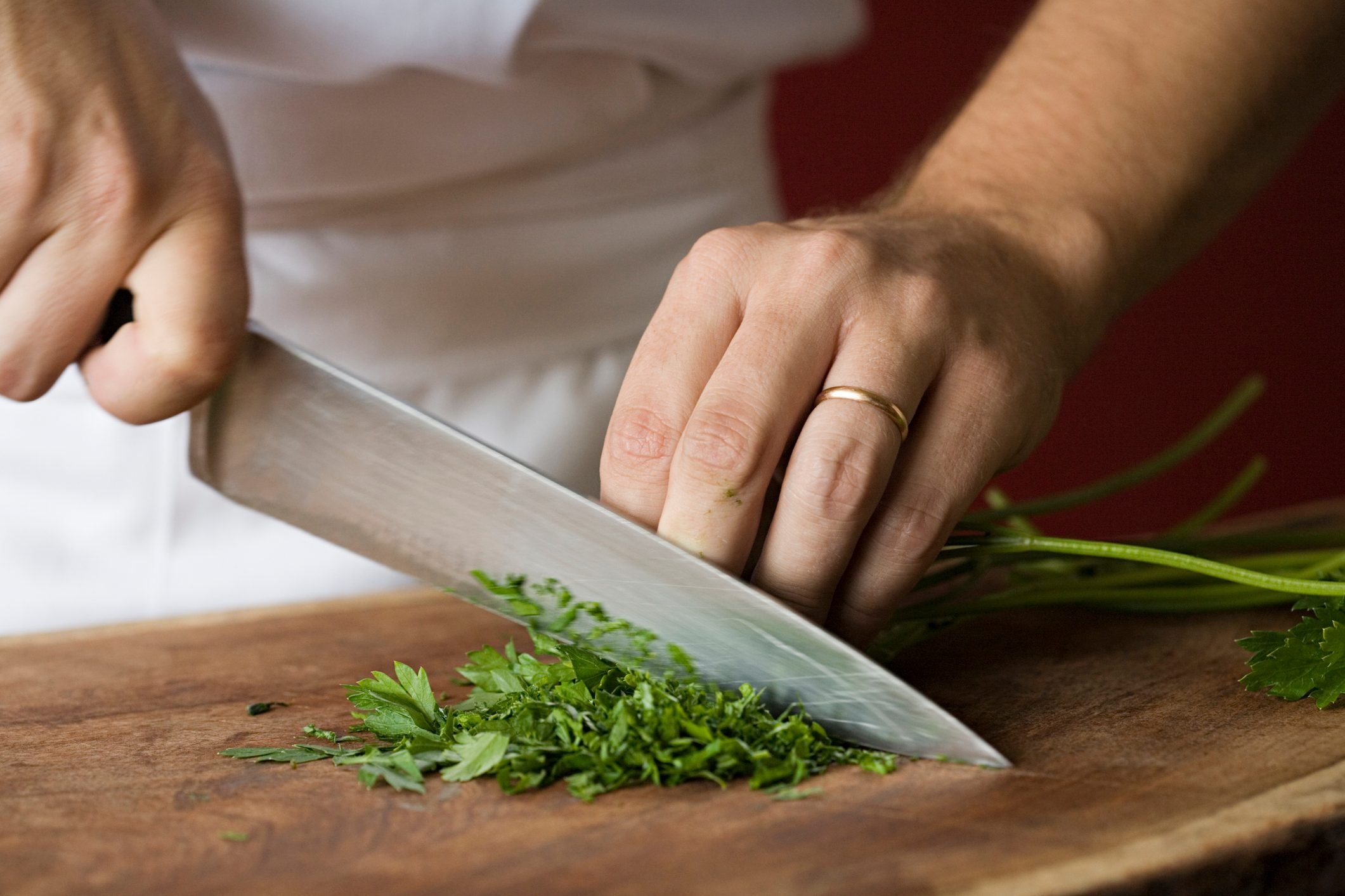Your knife is the most important tool in the kitchen—and it can also be the most dangerous.

The Dangerous Mistake You Might Be Making with Your Knives

There’s a reason chefs take their knives so seriously. A good knife becomes the extension of a chef’s fingers and hands, deftly working through everything from delicate herbs to tough cuts of meat. Knives are just as important in a home kitchen. You only need a few essential knives for almost any task in the kitchen, but even after picking out the best chef’s knife, you still have to know how to maintain it and use it safely.
I had a lot to learn about knives when I started culinary school 20 years ago. Since then, I’ve worked in restaurants, professional test kitchens and my home kitchen. I’ve seen plenty of kitchen accidents (and had a few myself). Though accidents will always happen, I’ve learned you are more likely to stay injury-free if you avoid this one common mistake.
The Most Dangerous Mistake Is a Dull Knife
In culinary school, my chef instructors tested their knives by holding up a piece of paper and slicing cleanly through it. If our own attempt yielded ragged or crumpled paper, we were expected to sharpen our knives before the next lesson. The expectation to maintain our knives’ edges was a directive and not a debate. Sharpness matters—it’s more efficient and less dangerous than using a dull knife.
- A sharp knife requires less force. A razor-sharp blade will more easily glide through food, requiring less manual pressure. Even if there is a slip, there will be much less power behind the knife.
- A honed edge keeps food from rolling around. When a knife is dull, the blade is more likely to slide rather than sink into the food, especially anything round or slippery, and you do not want the edge to slide into your hands or fingers. I still have a scar from the time my knife slipped off the rounded side of a jalapeno and sliced deep into the top of my finger, leaving me seeing stars and in desperate need of several bandages.
- The sharper the knife, the faster and easier you can chop. As a blade dulls, one of the first things that happens is that after chopping, the food pieces are not fully separated, so you have to go back and re-cut, often with more force. Handling smaller pieces of food and cutting two to three times increases the opportunities for your fingertips to get in the way and cause an injury. When your knife is properly maintained, one slice or chop is more than enough to complete the task.
The best way to avoid the dangers of dull knives is obvious. You have to keep them sharp. You can buy different kinds of knife sharpeners and do it yourself, or you can have them professionally sharpened. Each way has pros and cons because knowing how to sharpen a knife takes practice to maintain the overall shape and angle of the blade. A professional sharpener uses a powerful wheel, and without enough experience, they can quickly over-grind the blade or use uneven pressure, causing pitting on the edge that will catch on food rather than glide through.
If this seems daunting, don’t worry—you don’t need to sharpen your knives daily and can extend the time between sharpening in a few easy ways. Avoid common ways people abuse knives, like using them for tasks outside the kitchen or leaving them in the sink. Keep knives clean and store them in a knife block or with a guard to protect that sharp edge.
